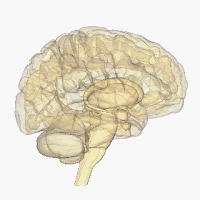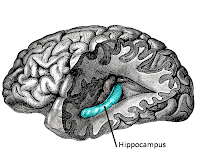Can Neuroscience reveal mysteries of the mind
I thought it be cool to ponder on, since we have the 'chicken or the egg' question... well we also have the 'is the mind the brain' question too..
Original title: Neuroscience can reveal mysteries of the mind
A post from Mark Stokes (Oxford Centre for Human Brain Activity) all I did was correct the typo's :) Thanks Stokes!
Recently I responded in the Guardian to a couple of high-profile articles criticizing over-hyped neuroscience [e.g., here and here]. Most of the claims were leveled at bad scientific practices identified in the field, however boldly concluded that neuroscience is in principle unable to answer deep questions of mind.
 Recently, philosopher, poet, novelist and cultural critic Raymond Tallis reminds us the brain is not the mind [see here for a similar argument by David Brooks in the NY Times]. As Gilbert Ryle famously argues in the Concept of Mind, to confuse the two levels of description is to commit a category mistake. The brain is not the mind, but the basic medium that gives rise to all mental faculties. In other words, mind is what the brain does. The philosophical distinction between mind and brain is valid and important, but it does not imply any limit on how much studying the brain will inform us about the workings of the mind. That is an empirical question.
Recently, philosopher, poet, novelist and cultural critic Raymond Tallis reminds us the brain is not the mind [see here for a similar argument by David Brooks in the NY Times]. As Gilbert Ryle famously argues in the Concept of Mind, to confuse the two levels of description is to commit a category mistake. The brain is not the mind, but the basic medium that gives rise to all mental faculties. In other words, mind is what the brain does. The philosophical distinction between mind and brain is valid and important, but it does not imply any limit on how much studying the brain will inform us about the workings of the mind. That is an empirical question.Experience - The Explanatory Gap
 |
| From Wiki Commons |
But this is a red herring - who really expects neuroscience to substitute subjective experience? If you want to experience red, you should find something red to look at. If you want to experience Bach, then go to a concert and leave the neuroscientists alone! You will certainly learn something new that can't be got from reading all the research on how the brain processes color or music. If you do not have the basic neural machinery necessary for these experiences, then you will remain ever-deprived in this respect as no other kind of knowledge will substitute for experience. Neuroscience (or any other study) is never going to provide a satisfactory substitute for direct subjective experience, but if you are searching for a causal explanation how the brain gives rise to these experiences, then there is no substitute for neuroscience.
 |
| Wiki Commons |
Every experience we have, every memory, every perception, hope, dream, plan, action... everything that makes up our mental life is causally dependent on some electrochemical state in the brain. In the modern age, this basic materialist view is rarely contested, even by the most vociferous critics of neuroscience (though Brooks gets pretty close here). It is simply no longer credible to invoke some non-material entity (ghost in the machine) as the ultimate cause of the private and uniquely special quality of human experience. If we want to understand how the material of brain gives rise to the phenomena of mind, then we need to understand the causal biological mechanisms that underpin the cognitive architecture that is collectively termed mind. This includes perception, memory, imagination, language (and other social interactions), sense of agency/free will, etc. But I reiterate, the purpose is to understand the causal mechanisms the give rise to the phenomena of mind, not to substitute the first order experience. The explanatory gap is simply a red herring.
I have argued that it is too early to predict how far neuroscience will be able to take us. It is hard to imagine some magical endpoint at which the final piece of the puzzle falls into place, and all mystery finally dissolves. But there is every reason to believe that the current direction is a promising one, and new technical developments and analysis approaches are likely to yield important new insights that can hardly be predicted at this early stage of the adventure. But to make a case in favor of neuroscience as a likely best place to look for answers to mind, it makes sense to consider how far we have come so far.
Never mind the 'neurobollocks'
 |
| Phrenology (Wiki Commons) |
Although a litany of bad practices in neuroscience does not imply that the endeavor is flawed in principle, it would undermine the future promise if there were no examples that survived the in practice critique. But this is simply not the case. Neuroscience has completely revolutionized our understanding of many core mental faculties over the last century. Research in long-term memory is probably a good example to illustrate how neuroscience can provide a powerful explanatory framework for understanding how the biology of brain causes a key mental faculty.
Case study: Long-term Memory
 |
| From Wiki |
| MRI (Wiki Commons) |
So the further neuroscientific question naturally arises: how do we form new memories? One popular theory is that the hippocampus re-activates recent experiences during sleep. This results in a kind of replay sequence of events is thought to eventually re-wire existing networks in the rest of the brain to integrate the new experience with all the other previous experiences. This is perhaps why we have experiences in our sleep (albeit with confusing/disjointed narratives). Unfortunately, dreams are notoriously difficult to study. There are no observable behaviors for animal studies (other than a bit of paw twitching... we can't ask a mouse to keep a dream diary), and human studies must rely on whatever experience survives the transition between sleep and wakefulness. Neuroscience is able to break through this barrier by measuring patterns of activity during sleep. Already, we have seen how activity in the mouse hippocampus reflects reactivation of previous experiences of recent events [i.e., learning a new maze: article]. More exciting, a recent proof-of-principle fMRI study has now shown that it won't be long before we can extend the same approach to humans [article here, and my review here and here]. Aside from the general awe and wonder associated with idea that we can reading peoples brains during sleep, these kind of studies provide the basic pathways to entirely new approaches for understanding the mental rumblings that are beyond the scope of other forms of enquiry [see here on 'mind reading'].
But this is just one example how neuroscience has provided key insights in the fundamental mechanisms of mind: memory (see here for a related discussion on free will by Björn Brembs). If this level of explanation does not satisfy your definition of "learning something new about the mind", then I can't imagine any other form of enquiry that is likely to be more satisfactory. We have not learned what it is like to have memory (i.e., the explanatory gap), but most of us already know what memory feels like anyway. The deeper question is how the brain gives rise to such phenomena of mind. Some questions of mind are amenable to introspection, others can be studied using more subtle cognitive behavioral experiments (i.e., cognitive psychology), while others can only be realistically addressed using neuroscientific methods. Future developments in neuroscientific methods will set the limit of this endeavor.
Comment
-
Comment by Paige on August 4, 2013 at 3:51pm
-
Really a very fascinating approach here. I had known much of what was said here, like about the amnesiac who was unable to recognize his own face after the procedure was done him that many years ago, but there were other bits of information I was able to learn here too. Thanks for sharing. The idea of a mouse actually keeping a dream diary was cute though, hehe :-)
-
Comment by Capt. Anand Kumar on June 30, 2013 at 10:58pm
-
It is a fabulous discussion. Thanks PS.
If the so called "mind" can only be accessed through brain, why the two should be considered distinctly?
-
Moderator Comment by John on June 30, 2013 at 8:31pm -
The Mind-Brain problem is very much at a crisis. I believe, after thinking about it on and off for several weeks, that the name change from DSM-V to DSM-5 is precisely involved with this issue. NIMH wants more direct chemistry, anatomy, fMRI etc. in the new DSM-V. The DSM-5 did not focus on that, they kept a lot of the more psychology->heuristical approach - and relied less exclusively on new Brain research. NIMH, I believe, may own DSM-V (a guess. i.e. the book title). Since NIMH would not accept the new DSM-V -- the writters/collaborators had to go with DSM-5. I can think of no other reason. I could be starting a new conspiracy rumor... <g>
But the last minute change from the traditional NIMH-backed DSM-V to the new name (done just weeks before press) was to use DSM-5.
In any case the issue of the Mind/Brain problem is very similar to the questions in science about Math and Physics.
In Math, it is Platonists (Math exists independent of the Brain), vs Man-creates-Math (no human -> no-Math). In Physics, it is the reality of the physical world. Do the fields and complex waves contain/are physical reality (ontologists),or are the Math-structures epistemological ... information and knowledge only.
as Theosophists.. Most would say (I am biased on this! <g>:
Mind is NOT Brain.
Math is independent of the human race
Physics is about information, relationships, epistemology, and correlations(if any). Cause-effect is more a relationship and has little temporal certitude/requirement..
The three preferences above have all become hot topics at the same time. This is a Very unusual happening in human history. We are poised and actually have the ability to solve this set of issues, as a complete set.. This century is poised for a potential explosion at the theosophical level.
© 2025 Created by Theosophy Network.
Powered by
![]()

You need to be a member of Theosophy.Net to add comments!
Join Theosophy.Net